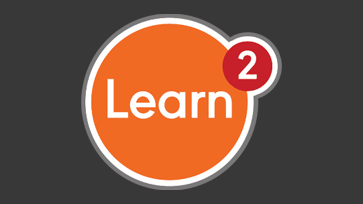Effective Leadership Development Strategies to Drive Engagement and Retention
Effective Leadership Development Strategies to Drive Engagement and Retention Strong leadership fuels any thriving workplace. Teams need more than just goals; they need a leader who inspires, communicates effectively, and creates a supportive environment. When leaders grow, businesses grow with them. At the same time, engaged employees stick around longer, feel valued, and give their best efforts. By connecting leadership development with employee engagement strategies, your organization can unlock lasting success. Foster Leadership Growth Through Mentorship Mentorship forms the backbone of many leadership development strategies. Pair future leaders with experienced mentors who can guide them through challenges, share wisdom, and pave the way for new opportunities. This direct interaction enables emerging leaders to pick up skills in real time, while also fostering meaningful relationships across your organization. Strong mentorship doesn’t just benefit leaders in training. Employees at all levels feel the positive effects. When they see their colleagues growing into new roles, it sparks a culture of ambition and energy on the floor. A leader who grew from within understands company values and leads with authenticity, encouraging others to seek growth as well. Empower Leaders with Communication Skills Training Effective communication differentiates great leaders from the average ones. When communication flows naturally, teams collaborate more seamlessly. Conflicts get resolved faster, and feedback lands clearly. Teach leaders to master the art of active listening, body language, and delivering clear messages in any team setting. Organizations must prioritize building this skill set. Learning programs, like communication skills training, allow leaders to sharpen their ability to connect with employees. This connection plays a major role in boosting employee engagement. When team members feel heard, they remain confident in their contributions and more motivated to perform. Cultivate a Feedback-Rich Culture Feedback keeps teams on track and aligned with goals. Leaders who model a culture of continuous feedback encourage transparency and trust. Create opportunities for frequent check-ins between leaders and employees, both structured and informal. Use feedback conversations as a two-way street. Employees don’t just want to hear feedback; they thrive when their input shapes decisions. When leaders invite ideas and suggestions, employees feel ownership over their work. Retention often grows when teams know their voices carry weight in the organization’s direction. Recognize and Reward Achievements Recognition plays a huge role in employee engagement and retention. Leaders who celebrate wins, big or small, cultivate a workplace where everyone feels valued. A simple “great job” or public acknowledgment in meetings can elevate morale and foster deeper loyalty in the team. Your leadership team sets the tone for recognition practices. Train leaders to recognize individual and team achievements on a regular basis. Consider pairing these efforts with reward systems like bonuses, promotions, or creative perks that resonate with employees. Create Transparent Career Pathways Employees stay committed when they see a future within the organization. Lay out clear career pathways for growth and development. Leaders serve as cornerstones in creating and communicating these progression maps to employees. Transparent conversations about what it takes to reach the next level keep employees engaged with their professional journey. When organizations provide leadership opportunities internally, employees remain motivated to invest their time and effort. Leaders emerging from within the organization provide clear proof of growth potential, encouraging others on their own paths. Prioritize Emotional Intelligence Skills in emotional intelligence (EQ) help leaders manage not just projects but people effectively. Leaders who show empathy, self-awareness, and emotional regulation create strong, trusting relationships with their teams. Employees connect deeper with leaders who understand their frustrations, challenges, and aspirations. Building emotional intelligence doesn’t happen overnight. Provide tools, resources, and workshops that focus on strengthening EQ skills. Leaders with strong EQ adapt better to changes, handle stress, and inspire their teams to stay aligned with organizational goals. Offer Continued Learning and Development Leadership development doesn’t stop after one training session. Offer continuous learning opportunities to enhance leadership capabilities and employee skills. Workshops, eLearning modules, and external conferences expose leaders to fresh perspectives and innovative ideas. When leaders invest in their growth, employees tend to follow their example, creating an upward spiral of learning within the organization. An upskilled workforce stays competitive, confident, and primed for long-term retention. Engage Employees Through Purpose-Driven Leadership People want their work to count for something bigger than themselves. Effective leaders connect employees’ tasks to the broader mission of the organization. Helping teams understand their impact creates a sense of belonging and value. Purpose-driven leadership improves both performance and loyalty. Leaders who tie individual performance to company goals give employees a reason to stay motivated. Retention rises naturally as employees align with a leader who inspires them to contribute to something meaningful. Effective Leadership Elevates Businesses Leadership development strategies paired with employee engagement tactics form a powerful combination. Build mentorship programs, prioritize communication training, and encourage a feedback-rich culture. Recognize achievements, offer clear career paths, and cultivate EQ among leaders. With these steps, your workplace fosters both happier employees and strong leadership that stands the test of time. Ready to take the next step in leadership growth? Equip your leaders with essential skills through communication skills training. Take action today and create a workplace where both leaders and employees thrive together.


